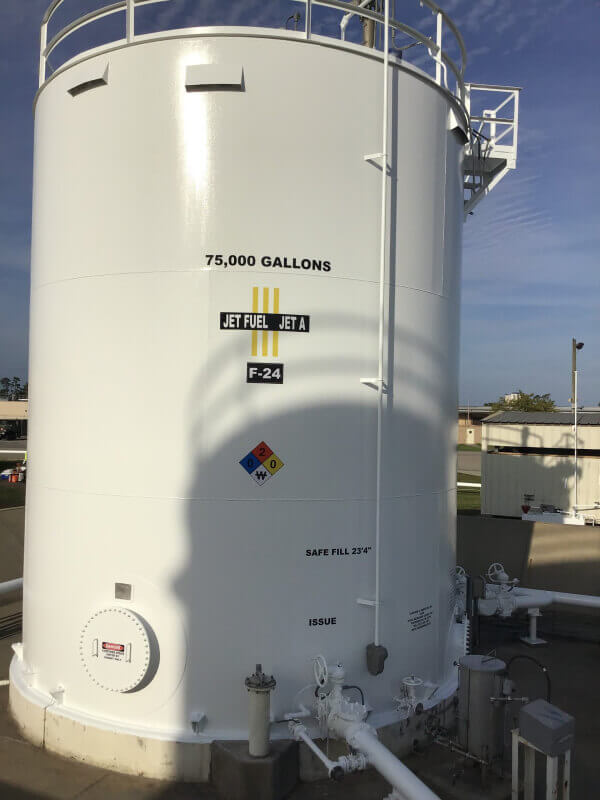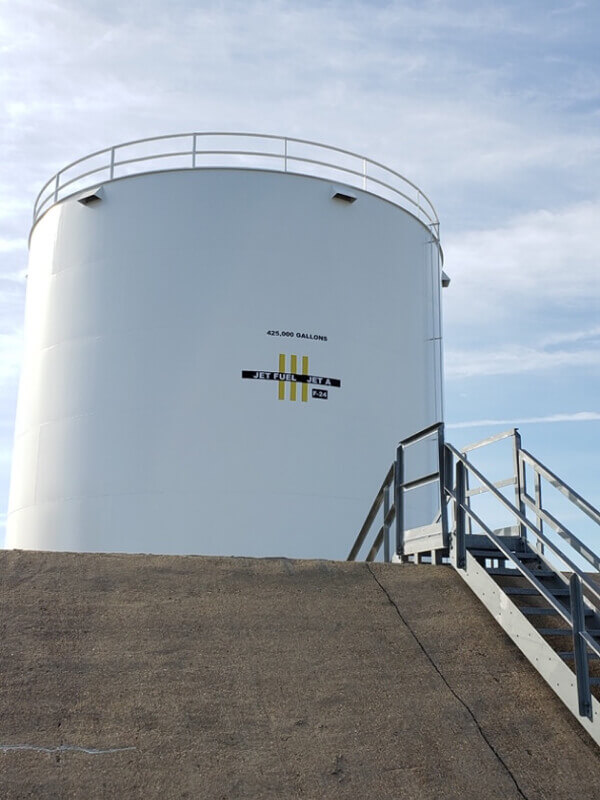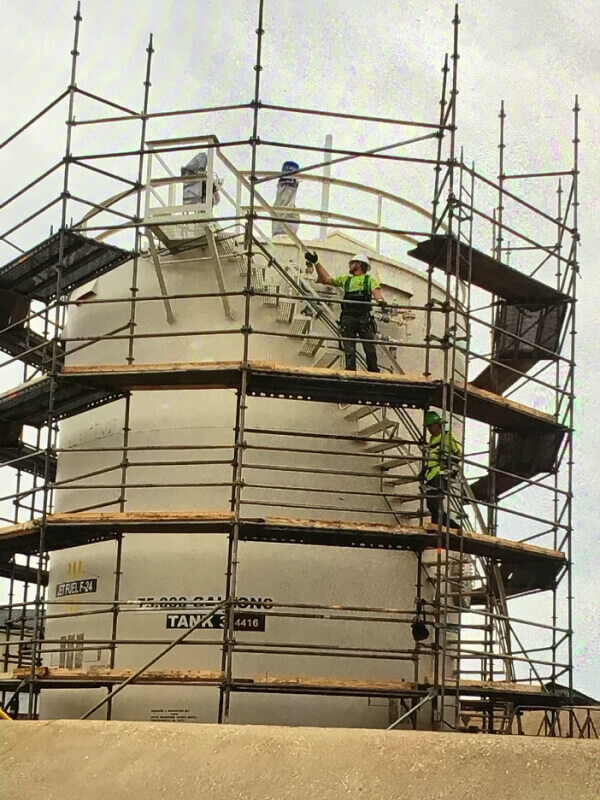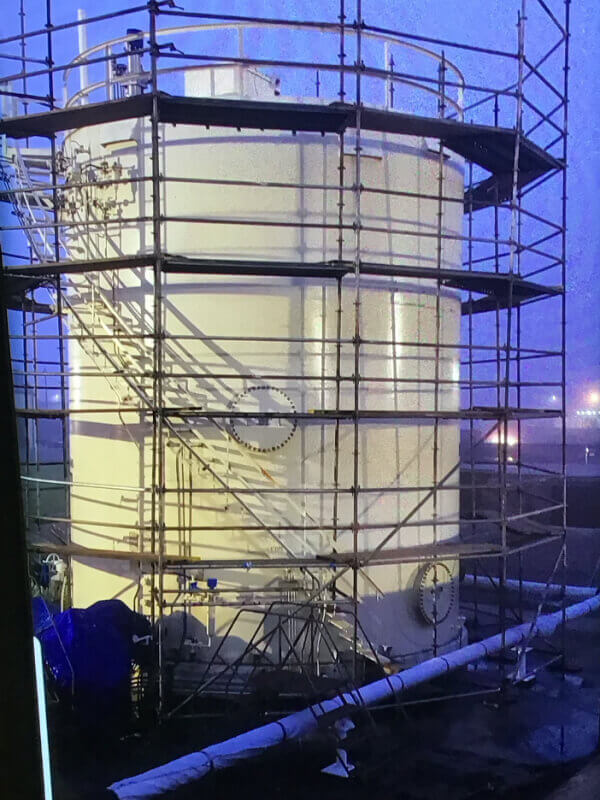Underground Tank Removal at Pilgrim Nuclear Station
Plymouth, Massachusetts
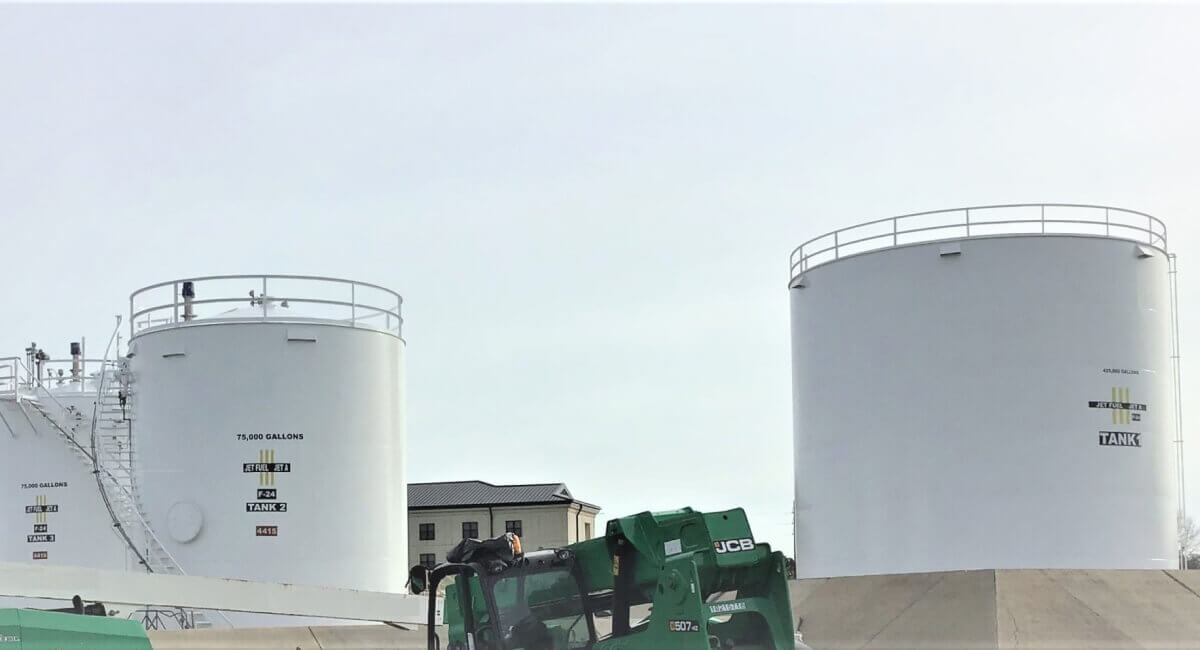
All surface preparation and coatings for the tank exteriors including roofs, stairwells, and appurtenances of three jet fuel storage tanks at Keesler Air Force Base, Biloxi, MS:
Work began on January 13, 2020 and finished on March 16, 2020. The main tank, 44’ x 42’, was surrounded by a high barrier, which required a 100 ton crane to position aerial lifts for surface preparation of SSPC-SP-10 Wet Abrasive Blast with coal slag. Champion proposed and was approved to conduct wet abrasive blasting as an effective and cost saving measure.
Tank sweating was noted as a result of ambient conditions throughout the project, and our foreman employed a combination of daily work hour modifications with coordinated fuel transfers to lower fill lines and obtain dry surfaces. Champion Quality Control worked with our GC and the U.S.G. to obtain an approved variance for the use of Sherwin Williams Acrolon Ultra as the finish coat due to environmental conditions.
This project’s success was a direct result of Champion’s solid partnership with our GC, and in turn our cooperative ability to synchronize weather-driven pivots with base authorities for quick review and approval.
Exterior Specification: UFGS 09 97 13.27
Exterior Surface Preparation: Tanks/appurtenances SSPC-SP-10 WAB (Wet Abrasive Blast with Coal Slag), Stairwells (SSPC-SP-7 WAB, SSPC-SP-10 as needed)
Exterior Coatings System: Sherwin Williams
Primer: MIL-DTL-24441/19C TYPE III FORMULA 159 EPOXY POLYAMIDE ZINC RICH PRIMER @ 3.0-5.0 mils DFT
Intermediate: MIL-DTL-24441D TYPE IV FORMULA 152 EPOXY POLYMIDE @ 3.0-5.0 mils DFT
Topcoat: Acrolon Ultra (approved variance by USG) @ 2.0-3.0 mils DFT
Date: 3-16-2020
Prepared: Zack Beehner
Project: Service Order, Tank Repairs – Multiple Tank Coating Repair
General Contractor: Pond Constructors
Customer: USACE
Coatings
Tank Lining
Prioritization of the work by the U.S.G. required execution during less-than-ideal weather conditions. On the 44’ x 42’ and first 22’ x 27’ tanks, high winds were countered with modified containment curtains permitting work underneath on lifts and scaffolding. The final 22’ x 27’ tank was scaffolded and contained with mesh in order to ensure schedule adherence.
